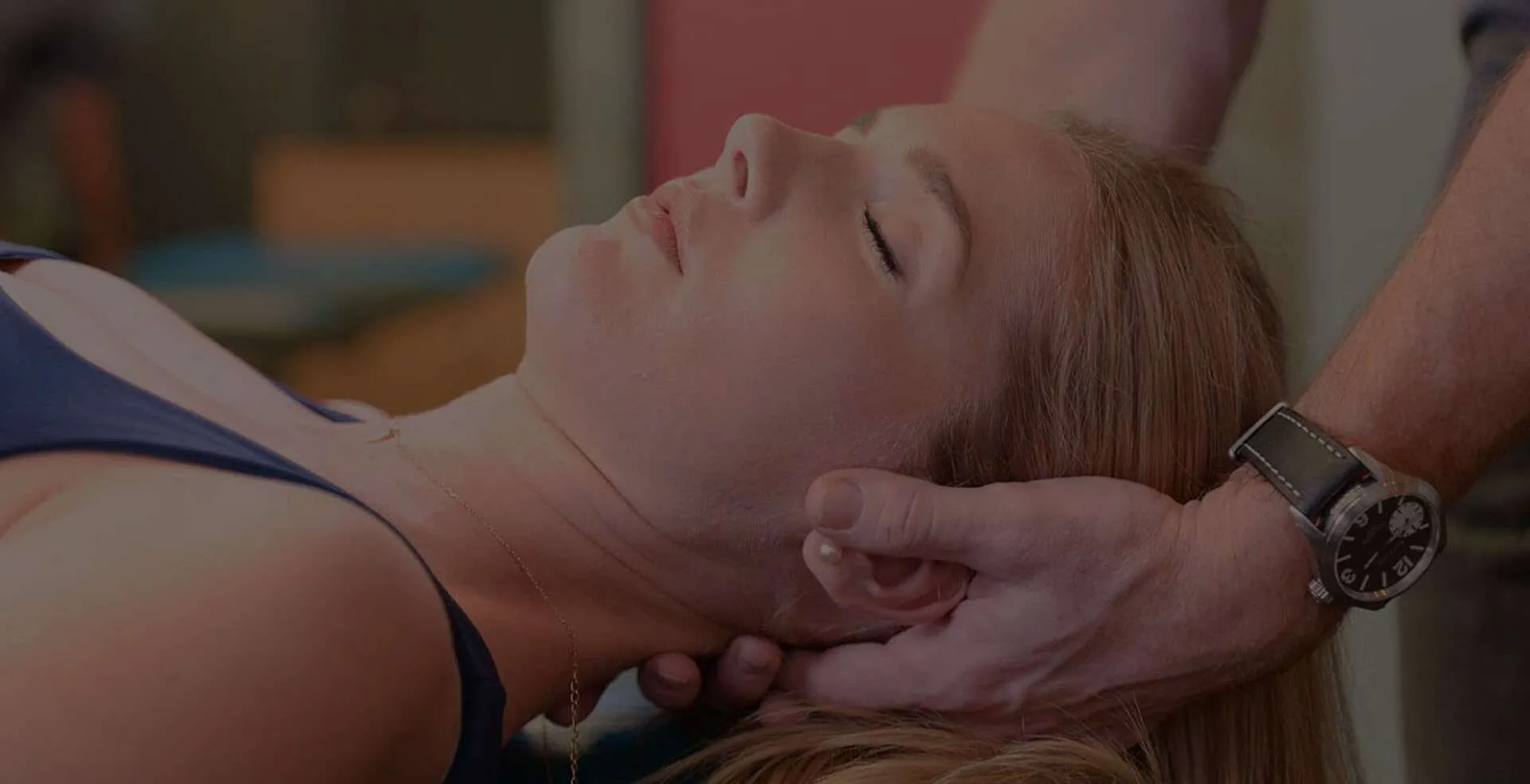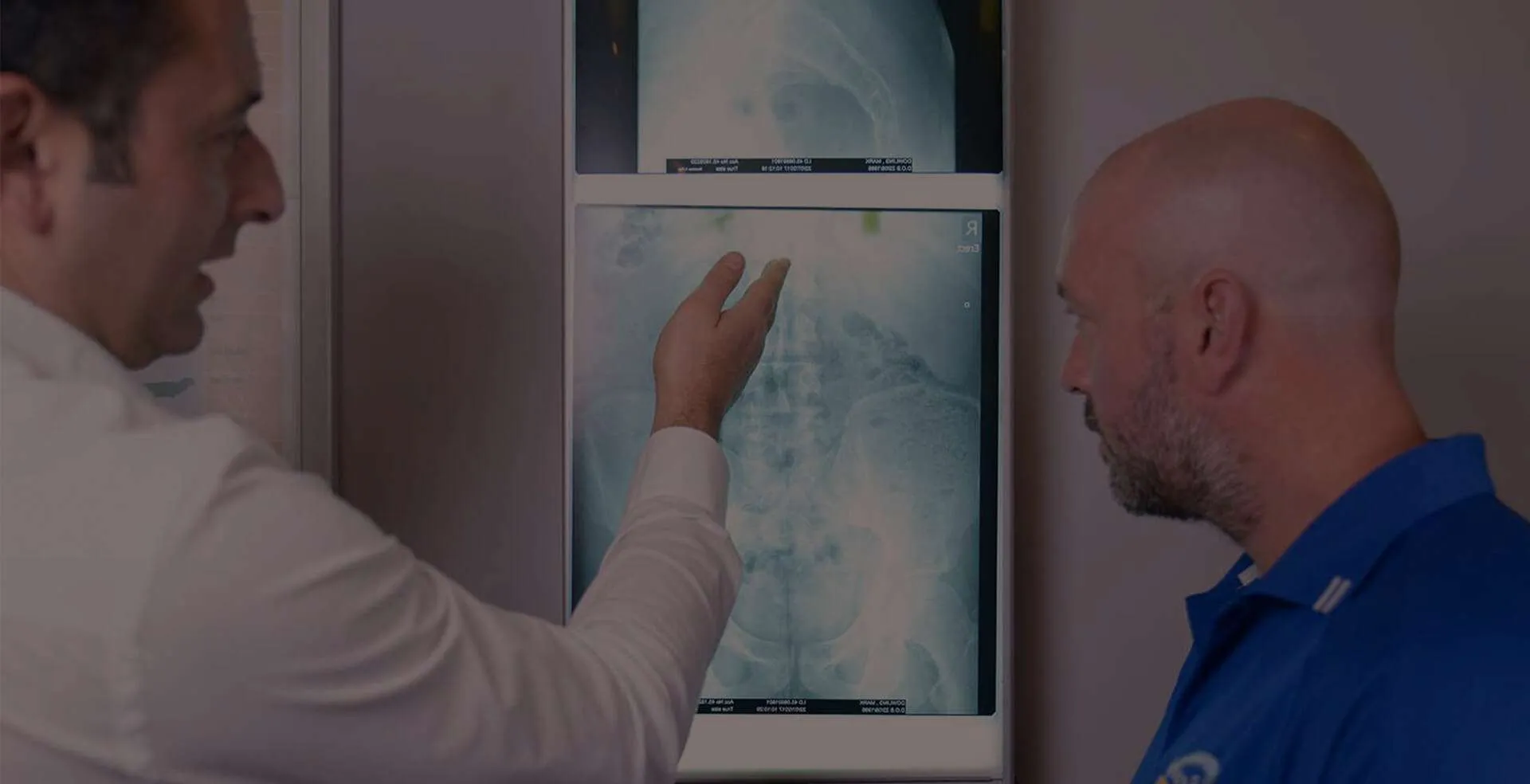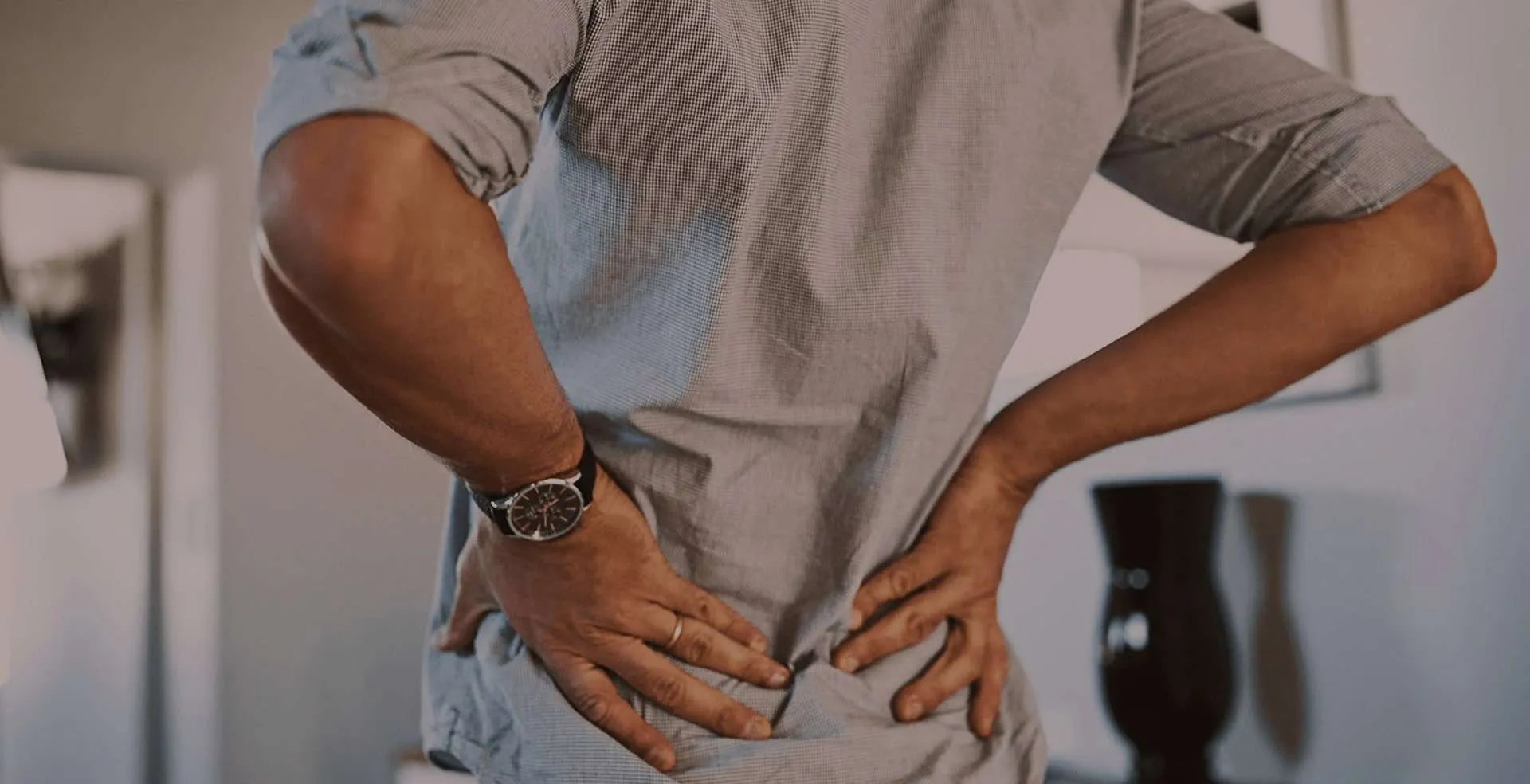Understanding and Managing Spine Pain: Causes, Symptoms, and Treatment Options
From the neck to the lower back, this type of discomfort can significantly impact daily activities, work performance, and overall quality of life. Whether caused by poor posture, injury, or underlying health conditions, spine pain can manifest as sharp, stabbing sensations, dull aches, or persistent stiffness.
Chiropractors in Sydney are well-equipped to diagnose and treat various forms of pain, offering targeted interventions that can provide relief and improve spinal health. With proper chiropractic care, many patients find they can return to their normal activities pain-free, regaining mobility and enjoying a better quality of life.

Solutions for Spine Pain
- Spine Decompression Therapy
- Holistic Approach to Spine Health
- Nutrition Counselling
- Soft Tissue Therapies
- Preventive Care and Long-term Benefits
Diverse Causes of Spine Pain: Lifestyle and Medical Factors
Understanding the root causes is crucial for effective treatment and prevention. Spine pain can arise from a multitude of factors, ranging from lifestyle choices to underlying medical conditions.
Poor Posture and Sedentary Lifestyles
Poor posture, especially in our increasingly sedentary and technology-driven world, is a leading contributor to spine discomfort. Many individuals spend hours hunched over computers or looking down at smartphones, placing undue stress on the neck and upper back. This prolonged misalignment can lead to muscle strain, disc issues, and chronic pain.
Occupational Hazards
Occupational hazards also play a significant role, particularly for those in physically demanding jobs involving heavy lifting, repetitive motions, or prolonged sitting or standing. These activities can cause wear and tear on the spine’s structures over time.
Age-Related Degeneration
Age-related degeneration is another common culprit, as the discs between vertebrae naturally lose hydration and elasticity, potentially leading to conditions like spinal stenosis or herniated discs. Traumatic injuries like those from car accidents or sports, can cause immediate and sometimes long-lasting spine pain. Certain medical conditions like osteoarthritis, rheumatoid arthritis, fibromyalgia, and osteoporosis can contribute to or exacerbate spine pain.
Lifestyle Factors
Lifestyle factors such as obesity place extra strain on the spine, while smoking can impede blood flow and nutrient delivery to spinal tissues, slowing healing and potentially worsening pain. Stress and anxiety, often overlooked, can cause muscle tension and alter pain perception, contributing to chronic spine discomfort. Genetic predisposition may also play a role in some individuals’ susceptibility to certain spinal conditions. It’s important to note that spine pain can sometimes be a symptom of more serious underlying conditions, such as infections or tumors, though these are less common.
Comprehensive Approach to Treatment
When seeking lower spine pain relief, understanding these diverse causes is essential. Chiropractors and other spine specialists employ various diagnostic tools to pinpoint the exact source of pain, which may involve a combination of factors.
Identifying Symptoms: When to Seek Professional Spine Pain Treatment
Spine pain can manifest in various ways, often signaling the need for professional intervention such as chiropractor spine adjustment or other forms of posture alignment or spine pain treatment. The symptoms are diverse and can range from mild discomfort to debilitating agony, affecting individuals differently based on the underlying cause and location of the issue.
Persistent Ache or Stiffness
Many people experience sharp, shooting pains that can extend into the arms or legs, often indicative of nerve compression or irritation. This radiating pain, known as radiculopathy, may be accompanied by numbness, tingling, or weakness in the affected limbs.
Muscle Spasms
Muscle spasms are another frequent symptom, causing sudden and involuntary contractions that can be both painful and restrictive to movement. Some individuals may notice a reduced range of motion, finding it difficult to bend, twist, or perform everyday activities without discomfort.
Postural Changes and Headaches
In severe cases, spine pain can lead to postural changes as the body attempts to alleviate pressure on affected areas, potentially resulting in a hunched or lopsided appearance. Various forms of headaches, particularly those originating from the base of the skull, can be a symptom of upper spine issues. For those with lower spine problems, difficulty standing up straight or maintaining a seated position for extended periods is common.
Sleep Disturbances
Sleep disturbances are also frequently reported, as finding a comfortable position may prove challenging. In some instances, spine pain can be accompanied by more serious symptoms that require immediate medical attention, such as loss of bladder or bowel control, which may indicate severe nerve compression.
Serious Symptoms
Fever or unexplained weight loss in conjunction with spine pain could signal an infection or other systemic issues. It’s important to note that the intensity and duration of symptoms can vary greatly. Some individuals may experience acute, short-term pain following an injury, while others might suffer from chronic, long-lasting discomfort. The onset of symptoms can be gradual, developing over time due to repetitive strain or degenerative conditions, or sudden, as in the case of traumatic injuries.
Recognizing and Treating Spine Pain
Recognizing these symptoms is crucial for seeking appropriate spine pain treatment. Chiropractors and other spine specialists are trained to assess these symptoms, often using a combination of patient history, physical examination, and diagnostic imaging to determine the underlying cause.
Comprehensive Spine Pain Treatment: From Chiropractic Care to Advanced Therapies
Chiropractic care plays a crucial role in spine pain treatment, offering a non-invasive, drug-free approach to addressing various spinal issues, including degenerative spine disease. Chiropractors utilize a range of techniques, with spinal adjustment being their primary tool. This hands-on therapy involves applying controlled force to joints of the spine, aiming to improve alignment, enhance mobility, and alleviate pain.
For patients seeking degenerative spine disease treatment, chiropractic care can be particularly beneficial. As the spine naturally ages and degenerates, chiropractors work to maintain optimal spinal function, potentially slowing the progression of degenerative conditions and managing associated symptoms. They may employ specific adjustment techniques tailored to the patient’s condition, often combining these with other therapies for a comprehensive approach.
Spine Decompression Therapy
One such complementary treatment is spine decompression therapy, which many chiropractors offer as part of their practice. This non-surgical procedure uses motorized traction to gently stretch the spine, creating negative pressure within the discs. For patients with degenerative disc disease, herniated discs, or spinal stenosis, this therapy can help relieve pressure on spinal nerves, promote healing, and improve overall spinal health. Chiropractors often integrate spine decompression therapy with traditional adjustments for enhanced results.
Holistic Approach to Spine Health
Beyond these core treatments, chiropractors take a holistic view of spine health. They assess factors such as posture, gait, and lifestyle habits that may contribute to spine pain. This comprehensive evaluation allows them to develop personalized treatment plans that may include exercises for strengthening supporting muscles, stretches to improve flexibility, and advice on ergonomics and lifestyle modifications. For instance, a chiropractor might recommend specific exercises to support the lower back for someone with lumbar degenerative disc disease or suggest postural changes to alleviate pressure on the cervical spine for those with neck issues.
Nutrition Counselling
Nutrition counseling is another aspect of chiropractic care that can support spine health, particularly for patients with degenerative conditions. Proper nutrition can help reduce inflammation, support bone health, and maintain a healthy weight, all of which are crucial for managing spine pain.
Soft Tissue Therapies
Chiropractors may also use various soft tissue therapies, such as massage or myofascial release, to complement spinal adjustments and address muscle tension or imbalances contributing to spine pain. By offering this multifaceted approach, chiropractic care provides a valuable non-surgical option for many patients dealing with pain, whether acute or chronic.
Preventive Care and Long-term Benefits
Regular chiropractic visits can not only help manage existing conditions but also play a preventive role, potentially reducing the likelihood of future spinal issues or slowing the progression of degenerative processes.
Lifestyle Tips for Managing and Preventing Spine Pain
While professional back spine pain treatment options are crucial, incorporating daily habits and lifestyle changes can significantly enhance spine health and pain management.
Proper Posture and Regular Exercise
Maintaining proper posture is paramount, especially for those who spend long hours sitting. Ergonomic workstations with supportive chairs and correctly positioned monitors can help alleviate strain on the spine.
Regular exercise, particularly activities that strengthen core muscles, can provide better support for the spine and improve overall posture. Low-impact exercises such as swimming, walking, or yoga can be especially beneficial for those with existing spine issues. Proper lifting techniques are essential to prevent injury; always bend at the knees and lift with the legs, not the back. Regular chiropractor spine adjustments, even when not in acute pain, can help maintain spinal alignment and prevent future issues.
Adequate Sleep and Stress Management
Adequate sleep on a supportive mattress allows the spine to rest and recover, while sleeping positions that maintain spinal alignment can prevent morning stiffness. Stress management techniques like meditation or deep breathing exercises can help reduce muscle tension that often contributes to spine pain.
Maintaining a Healthy Weight
Maintaining a healthy weight is crucial, as excess weight puts additional stress on the spine. Proper nutrition, including foods rich in calcium and vitamin D, supports bone health and can aid in managing conditions like osteoporosis that affect the spine.
Staying Hydrated and Quitting Smoking
Staying hydrated is important for maintaining the elasticity of the intervertebral discs. For those who smoke, quitting can improve blood flow to the spine and enhance overall spinal health. Being mindful of daily habits like avoiding prolonged periods in one position, using proper footwear, and stretching regularly can all contribute to long-term spine health and complement professional back spine pain treatment.
Dealing With Spine Pain - Summary
Understanding spine pain involves recognizing its diverse causes, from poor posture and injuries to age-related degeneration and underlying medical conditions. The symptoms can vary widely, ranging from mild stiffness to severe, debilitating pain that affects mobility and daily activities. Fortunately, there are numerous treatment options available, from conservative approaches like chiropractic care and physical therapy to more advanced interventions such as spine decompression therapy.
Chiropractors play a crucial role in managing pain, offering non-invasive treatments that can provide relief and improve spinal function. Remember, each person’s experience is unique, and what works for one individual may not be suitable for another. It’s essential to consult with healthcare professionals to develop a personalized treatment plan that addresses your specific needs and concerns. With the right approach and care, many people find relief from spine pain and can return to enjoying their daily activities with greater comfort and ease.
Neck Pain

How to Know If Shoulder Pain Is Serious?
Shoulder pain is a common complaint that can stem from various causes, ranging from minor strains t...
Pregnancy Back Pain: Chiropractic Relief
Pregnancy is indeed something to be happy about—the joy of creating an entirely new human being who...
The Main Reasons for Lower Back Pain
You’ve probably experienced some form of lower back pain, regardless of your age. Some of it is act...
Here’s Why Chiropractic Care Is Effective for Back Pain
Back pain is a pervasive issue affecting millions worldwide, and most of us have probably experienc...
Back Pain

How to Know If Shoulder Pain Is Serious?
Shoulder pain is a common complaint that can stem from various causes, ranging from minor strains t...
Pregnancy Back Pain: Chiropractic Relief
Pregnancy is indeed something to be happy about—the joy of creating an entirely new human being who...
The Main Reasons for Lower Back Pain
You’ve probably experienced some form of lower back pain, regardless of your age. Some of it is act...
Here’s Why Chiropractic Care Is Effective for Back Pain
Back pain is a pervasive issue affecting millions worldwide, and most of us have probably experienc...
Disc Pain

How to Know If Shoulder Pain Is Serious?
Shoulder pain is a common complaint that can stem from various causes, ranging from minor strains t...
Pregnancy Back Pain: Chiropractic Relief
Pregnancy is indeed something to be happy about—the joy of creating an entirely new human being who...
The Main Reasons for Lower Back Pain
You’ve probably experienced some form of lower back pain, regardless of your age. Some of it is act...
Here’s Why Chiropractic Care Is Effective for Back Pain
Back pain is a pervasive issue affecting millions worldwide, and most of us have probably experienc...
Shoulder Pain

How to Know If Shoulder Pain Is Serious?
Shoulder pain is a common complaint that can stem from various causes, ranging from minor strains t...
Pregnancy Back Pain: Chiropractic Relief
Pregnancy is indeed something to be happy about—the joy of creating an entirely new human being who...
The Main Reasons for Lower Back Pain
You’ve probably experienced some form of lower back pain, regardless of your age. Some of it is act...
Here’s Why Chiropractic Care Is Effective for Back Pain
Back pain is a pervasive issue affecting millions worldwide, and most of us have probably experienc...
Spine Pain

How to Know If Shoulder Pain Is Serious?
Shoulder pain is a common complaint that can stem from various causes, ranging from minor strains t...
Pregnancy Back Pain: Chiropractic Relief
Pregnancy is indeed something to be happy about—the joy of creating an entirely new human being who...
The Main Reasons for Lower Back Pain
You’ve probably experienced some form of lower back pain, regardless of your age. Some of it is act...
Here’s Why Chiropractic Care Is Effective for Back Pain
Back pain is a pervasive issue affecting millions worldwide, and most of us have probably experienc...
